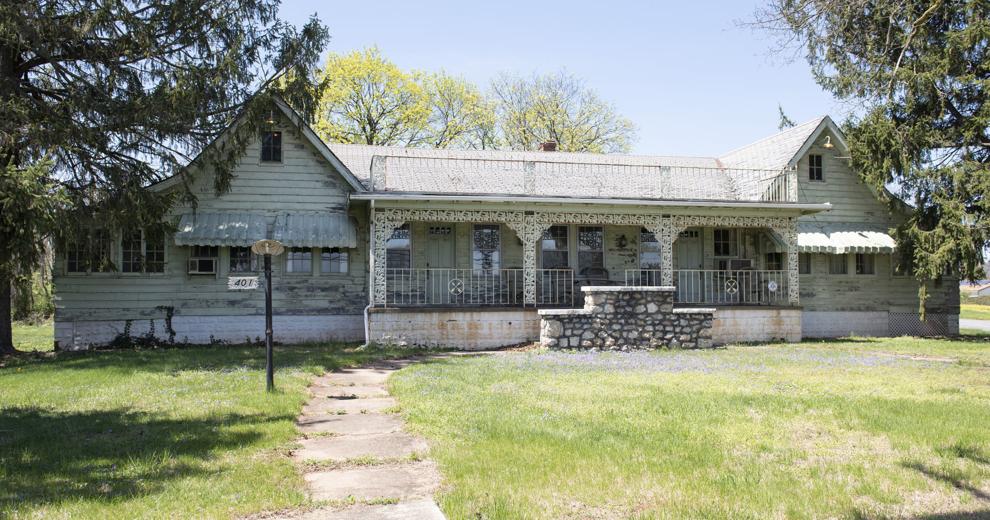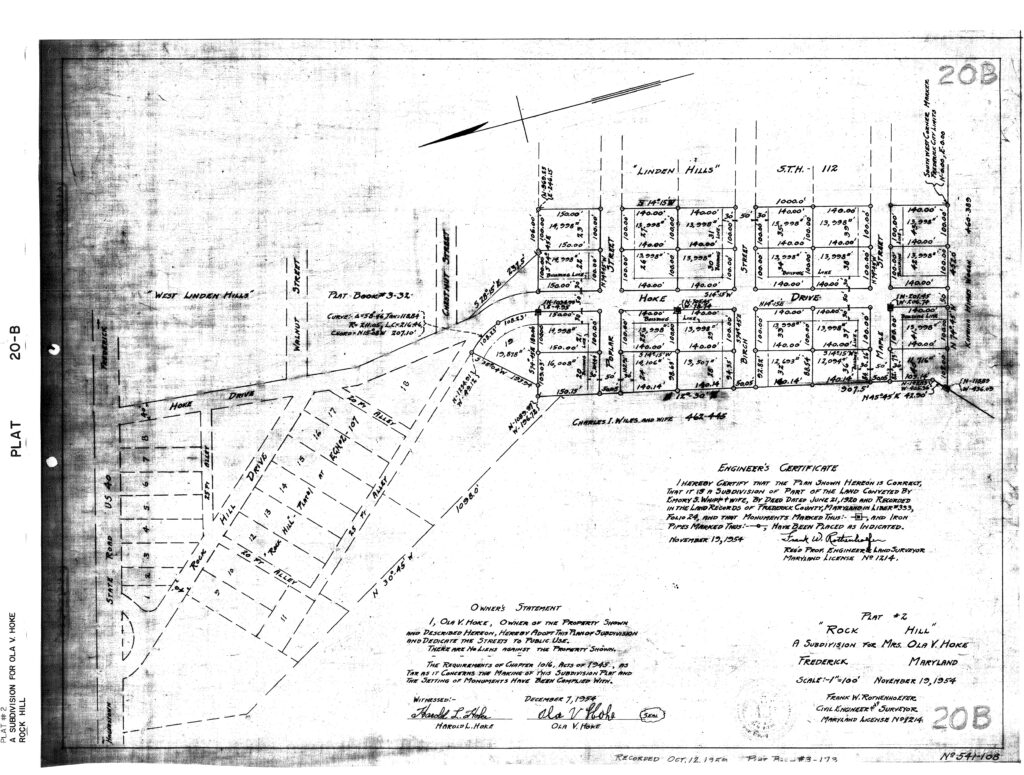The history of the Linden Hills neighborhood in Frederick, Maryland, is not widely documented in detail, but it reflects the broader patterns of growth and change in the Frederick area. Originally laid out in the 1920’s, the neighborhood itself dates back at least to the 19th century.
Linden Hills during the Civil War
Frederick, Maryland, played a significant role during the American Civil War, and although it was not subjected to a formal siege, it was held for ransom. The city was strategically important due to its location near major transportation routes and its proximity to Washington, D.C.
Frederick first experienced occupation by Confederate forces during the Maryland Campaign of 1862, when General Robert E. Lee’s army passed through the area en route to the Battle of Antietam. The city served as a hub for both Union and Confederate troops, and its residents endured the challenges of war, including requisitioning of supplies and the presence of wounded soldiers.
The ransom of Frederick itself occurred on July 9, 1864, when Confederate General Jubal Early and his forces approached the city. Early threatened to burn Frederick to the ground unless the city paid a ransom of $200,000. This demand came as part of Early’s campaign to divert Union forces away from Washington, D.C., and to fund his army’s operations.
During Early’s campaign, Frederick became a focal point as Confederate forces moved through the area. On July 7, 1864, skirmishes occurred west of the city in what is known as the Battle of West Frederick. This engagement was a precursor to the larger Battle of Monocacy on July 9, where Union forces under General Lew Wallace attempted to delay Early’s advance toward Washington. While the Confederates won the Battle of Monocacy tactically, the Union’s efforts bought crucial time for reinforcements to defend the capital.
Frederick’s leaders, faced with the threat of destruction, scrambled to raise the money. Local banks and citizens contributed to meet the demand, and the ransom was paid in cash. After receiving the payment, Early’s forces moved on, sparing the city from destruction. However, the event left a lasting mark on Frederick’s history, symbolizing the challenges and sacrifices faced by communities during the war.
Local lore has it that Linden Hills was part of General Early’s cannon line. Musket balls and related Civil War artifacts can be found scattered around the hillside today.
Linden hills in the 20th Century
Origin of Linden HIlls
The land that makes up Linden Hills today was originally owned by two families: the Hokes and the Goodman’s. Dr. James M. Goodman was born in Monroe County, West Virginia, on Nov. 15, 1873, to Silas and Betty (Sams) Goodman.
From The Frederick News Post:
In August 1916, the Daily News announced that Dr. Goodman purchased the old Hagan Farm, situated one-half mile west of town. The property was also known as McEwen’s Place, after Alfred McEwen, the president of the Ox Fibre Brush Company who had recently owned the land. McEwen had planned to move from New York to Frederick and bought the old farm because of its “splendid location.” Indeed, the property boasts a high elevation and impressive views of the city. Although McEwen planned to build a fine estate and had done some grading work, his business plans changed, and he never made the move. The property was sold to J.J. Sheck and then to Dr. Goodman.
On the day the deal was finalized, Dr. Goodman told the local newspaper that he planned to build an automobile road through the farm, connecting the Golden Mile to the trolley line located near the southern property boundary. The planned homes would have ready access to water and electricity, like downtown. Undoubtedly, Dr. Goodman was envisioning this area to serve as a trolley-serviced neighborhood. It was unique for its time, because unlike other developments from that era, the farm site was not attached to the urban core.
In 1923, Dr. Goodman officially platted the neighborhood, renaming McEwen’s Place as Linden Hills. The main thoroughfare is named Linden Avenue with side roads called after tree species such as Birch, Poplar, and Chestnut. The neighborhood also features larger lots that could accommodate homes with front, rear, and side yards. The design can be found in other early suburbs in Frederick, but Linden Hills is unique in that it was separated from the downtown, like the auto-oriented development that follows World War II.
https://www.fredericknewspost.com/places/local/frederick_county/frederick/preservation-matters-dr-goodmans-contributions-to-frederick/article_942150a9-2024-5557-8af2-65065a57b93d.html

Linden Hills is home to a number of notable structures, including the historic Cramer house. The house (and surrounding land) was once owned by Ammon & Helen [Mackley] Cramer, who would move to the new suburban development of Linden Hills, west of town. Cramer built a house at the top “Linden Hill”, in the 1930’s, shortly after the areas was subdivided in the 1920’s. The house is believed to be a prefabricated structure from the E.F. Hodgson Company, and to this day offers an incredible view of Frederick’s “clustered spires”.
Cramer was from one of Frederick’s earliest, and best known, founding families, and was the son of Civil War veteran John Phillip Cramer (1844-1923), a Civil War veteran, and is probably best known as the founder of Barbara Fritchie’s, the restaurant best known for it’s candy cane sign.

Image Credit: Frederick News Post
Fun Fact: Ammon at the time of his death in 1967 was originally interned across the street from his house, at the Clustered Spires Cemetery Mausoleum. Today, he is interned at Mount Olivet.
The 1940’s & 1950’s
The origins of “Rock Hill” as a subdivision started in the 1920’s with the subdivision of land owned by Mrs. Ola Hoke, who together with her husband LeRoy is the namesake of Hoke Place. LeRoy is notably, the son of Samuel Hoke Jr. (owner of both slaves and a lime kiln), who was in turn the son of Ceresville Marble Mills owner Samuel Hoke, Sr.


The 1960’s
Local Frederick landmark The Red Horse Steak House is located at the foot of Linden Hills, next to the former Red Horse Motor Inn, which is now a Comfort Inn. The restaurant got it’s start in 1968, positioned across the street from a Holiday Inn (today a Motel 6, built by attorney Dan Weinberg, best known today as the founder and patron of the Weinberg Center, in 1962) and the Maryland State Police Barracks.
Modern Day
In 2015 Frederick bid farewell to the State Police barracks, who moved to a facility near the Frederick Airport, and in it’s place Frederick received it’s first Wawa. The original Comfort Inn still stands, as does Dan Weinberg’s Holiday Inn, which is today a Motel 6. As we look forward toward the future, we should also appreciate the past.


Leave a Reply